Freshly baked homemade bread is a treat. And, with a KitchenAid mixer, the laborious task of kneading is done for you. Your biggest challenge is to decide what type of bread to make. From there, you might need a few pointers on mixing and kneading the dough. We've done the research. We are ready to help you figure out how long do knead bread dough in a KitchenAid.
Compared to spending 15-20 minutes kneading bread dough by hand, a KitchenAid mixer significantly reduces mixing time. For most bread recipes, you should run your mixer on speed 2 for about 2 minutes. Some bread doughs might take a long as 4 minutes and up to 7 minutes to come together. The type of flour and other ingredients might influence the overall kneading time. Read on as we break out mixing times by flour type and bread type.
Flour type:
- All-purpose flour: knead with mixer 2-4 minutes
- Bread flour: knead with mixer 2-4 minutes
- Whole wheat flour: knead with mixer 5-7 minutes
- Rye flour: knead with mixer 2 minutes
Bread type:
- Sourdough bread: knead with mixer 4-5 minutes
- Pita bread: knead with mixer 5-7 minutes
- Cornbread: knead with mixer 2 minutes
You might be wondering why the mixing time differs by flour type. Keep reading this post as we dig deeper into the craftsmanship and artisan world of dough kneading.
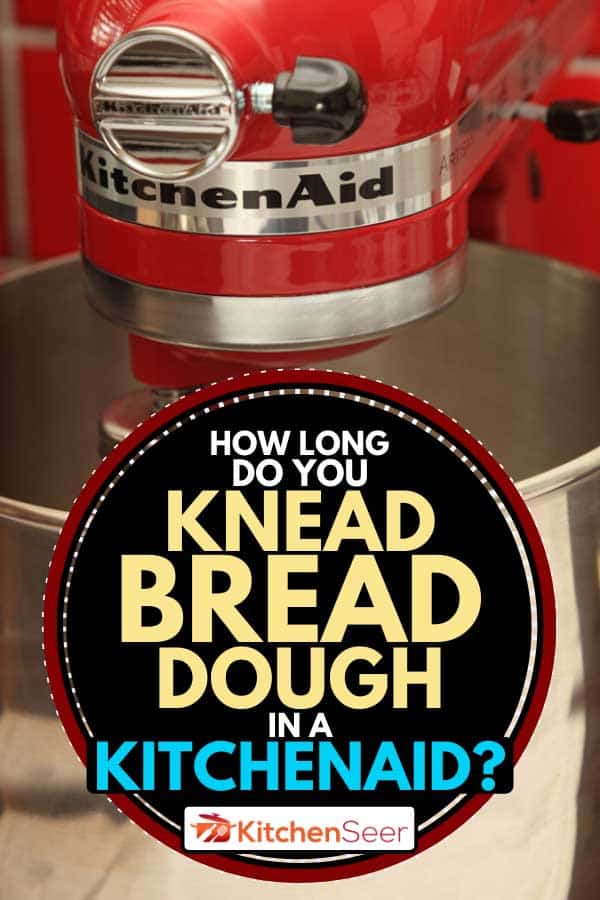
Why Does Kneading Time Differ By Flour Type?
All-purpose flour
Probably the most popular type of flour, all-purpose flour is high in protein and gluten. The strength of this kind of flour creates structure in bread. A higher protein content absorbs water and other liquid ingredients. All-purpose flour easily mixes in a short amount of time. The more all-purpose flour in your recipe, the less kneading time you'll need to get a stretchy dough.
Bread flour
Bread flour has a high percentage of protein as it a product of hard wheat. This flour provides the structure and strength in loaves of bread. Combined with yeast, bread flour creates gluten that gives us the chewy texture in a loaf. Like all-purpose flour, bread flour is easy to mix and doesn't require much kneading time to get an elastic dough.
Whole wheat flour
Whole wheat flour comes from the entire wheat grain. When baking with this type of flour, loaves of bread tend to be denser. Kneading the ingredients for a whole wheat dough takes longer than a white flour such as all-purpose. Whole wheat flour soaks up more water and other liquids compared to white flours. The mixer will need to run longer to get a soft and somewhat sticky dough that will rise. Click here to try an easy and popular recipe from King Arthur Baking.
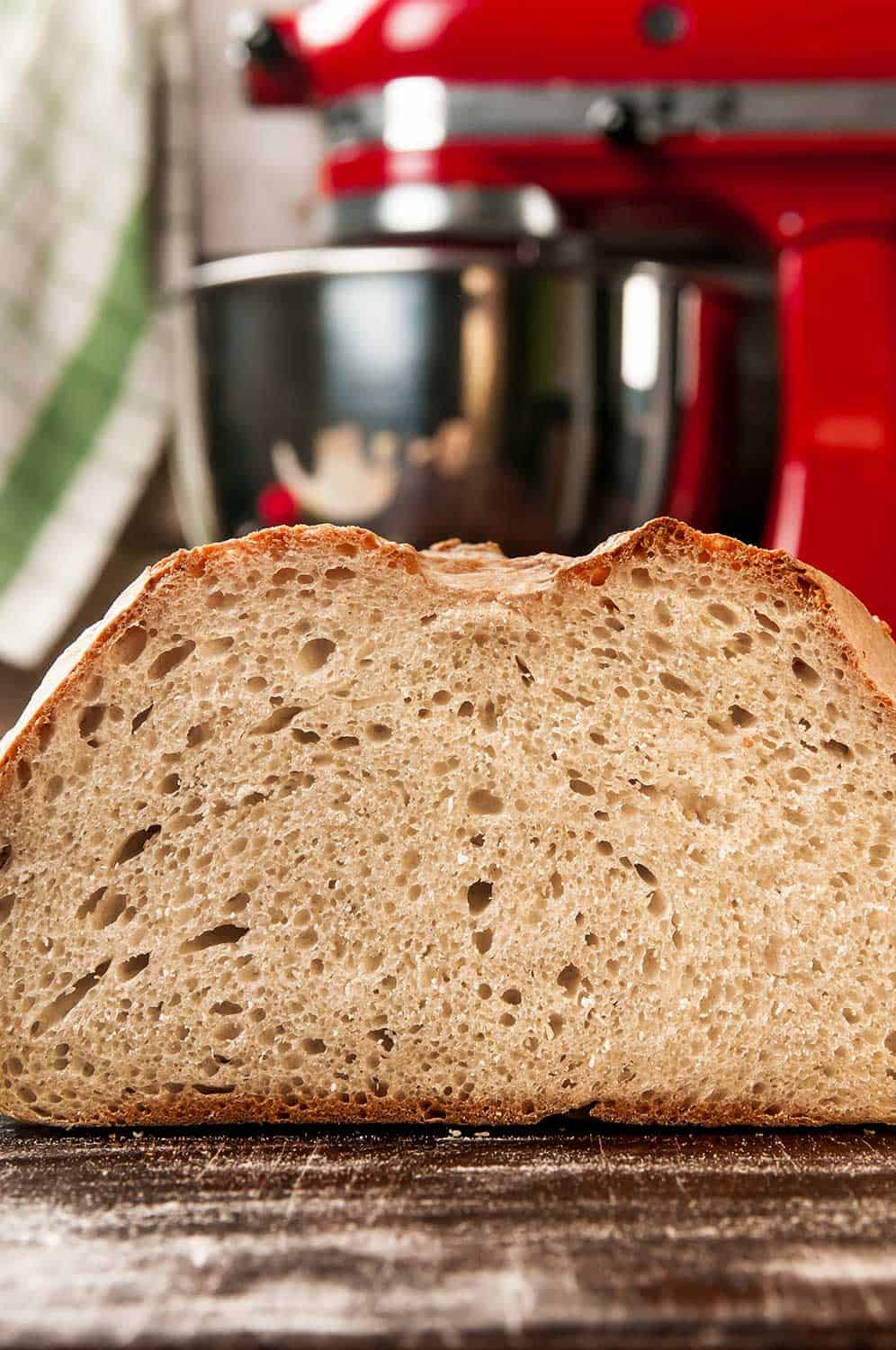
Rye Flour
Similar to whole wheat flour, rye flour uses the entire grain. Using rye flour in a dough recipe will result in a denser loaf of bread. There is less gluten in rye flour versus other flours, including whole wheat. Not much kneading is required when using rye flour because there isn't any gluten to develop. Once the dough is well mixed, it's time to shut off the KitchenAid.
Why Does Kneading Time Differ By Bread Type?
Sourdough Bread
Just about any flour will make a delicious loaf of sourdough bread. The key ingredient in this dough is the sourdough starter. Using all-purpose flour will result in less kneading time for the dough. The ingredients come together in minutes as gluten forms quickly.
A recipe that uses whole wheat flour will require more mixing time as the liquids are absorbed and benefit from a longer kneading time.
Cornbread
Cornmeal and all-purpose flour are the main ingredients in cornbread. Overmixing cornbread dough will lead to tough cornbread. Since cornbread should be light and fluffy, extra mixing time will develop unwanted glutens. Once the ingredients are combined, it's time to shut off the mixer.
Pita bread
In most pita bread recipes, the main ingredient is all-purpose flour. This type of flour mixes quickly in recipes. If you decide to use whole wheat flour, then mixing time will need to be increased. Once the dough pulls together, shut off the mixer. Click here to try this yummy recipe for pita bread.
How Do you Know When Dough is Over Kneaded?
A successfully mixed dough will be elastic. If your dough doesn't bounce back when you poke it with your finger, it's probably over kneaded. When you touch the dough if it feels tight, that's a sign of overworked dough. Try to roll out the dough, and if it breaks or fights back, that's another signal the gluten has is damaged.
If you think that you've over kneaded your dough, let it rest for a few hours. With time, the gluten might relax and soften.
How Do You Knead Dough in a KitchenAid?
Your KitchenAid mixer will knead the dough for you in minutes. Here are five easy steps to get started:
- Add your ingredients to the mixing bowl.
- Choose the dough hook or paddle mixing attachment.
- Turn the KitchenAid mixer on and move the control to speed 2.
- Watch your dough for a couple of minutes, depending on your recipe.
- Once the dough has pulled together, forming a ball, shut the mixer off.
You can also watch a step by step demonstration for a simple white bread here:
Does a KitchenAid Dough Hook Knead the Bread?
Yes, the KitchenAid dough hook will quickly knead your bread dough. Once you've combined your ingredients in the mixing bowl, attach the dough hook and let it do its job to create a stretchy bread dough. Don't forget to monitor the kneading time according to your recipe. You don't want to overwork your dough.
Do You Knead Dough Before or After it Rises?
Kneading dough is what helps bread develop the gluten that gives you a stretchy dough. It would be best if you kneaded the dough first. The unmixed or unkneaded dough won't rise. And, dough that doesn't rise is going to be dense.
Is KitchenAid Artisan Good for Bread Making?
The KitchenAid Artisan is ideal for your bread-making adventures. The Artisan is a powerful mixer with a large capacity bowl. According to KitchenAid, you can mix four loaves of bread with the Artisan Series 5-quart. This workhorse will knead the dough for you in minutes.
Click here to find a KitchenAid Artisan on Amazon.
Can You Knead Pasta Dough in a KitchenAid Mixer?
You can and should knead pasta dough in a KitchenAid mixer. Place all your ingredients into the mixing bowl and start with the paddle attachment on a low speed. Once those ingredients are combined, switch to the dough hook attachment. Run the mixer on speed 2 for about two minutes.
Then, remove the dough from the bowl, cover and let it rest. KitchenAid also makes attachments that help you roll out your pasta, as well as cut it into shapes. Check out our post, "5 Best Pasta Machine Brands You Should Be Looking Into," to learn about KitchenAid attachments as well as other cool pasta-making gadgets.
Get a KitchenAid to Knead That Dough
Baking homemade bread is not only easy; it's so satisfying. Kneading dough by hand is a bit relaxing for some people. For others, the task might keep them from even considering making their bread at home. And honestly, if you've kneaded bread dough by hand, you no doubt thought there must be a less labor-intensive and messy way to do it.
KitchenAid understands and offers many options for mixers that drastically reduce the kneading time dough requires. In minutes, these powerful appliances pull together ingredients for your perfect loaf.
Once you've got your dough ready to bake, have a look at our post, "7 Bread Pans with Lids," to make some crowd-pleasing sandwich bread.


![Baker man hands breadmaking kneading bread dough, How Long To Knead Bread [By Hand And In A Mixer]](https://kitchenseer.com/wp-content/uploads/2021/03/Baker-man-hands-breadmaking-kneading-bread-dough-250x250.jpg)
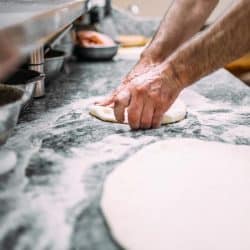

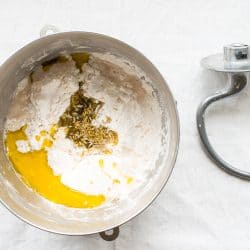
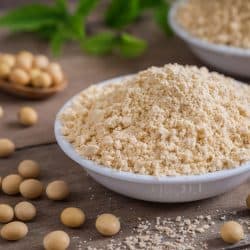
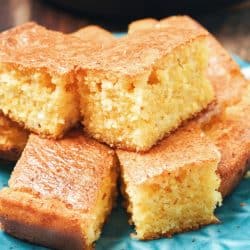
When I got my first Kitchenaid mixer, all the bread recipes basically, had me knead in the bowl (with the hook) for the same amount of time as if kneading by hand. What changed? 2 minutes doesn’t seem long enough to form the gluten. Now u knead by flower type.
What gives?